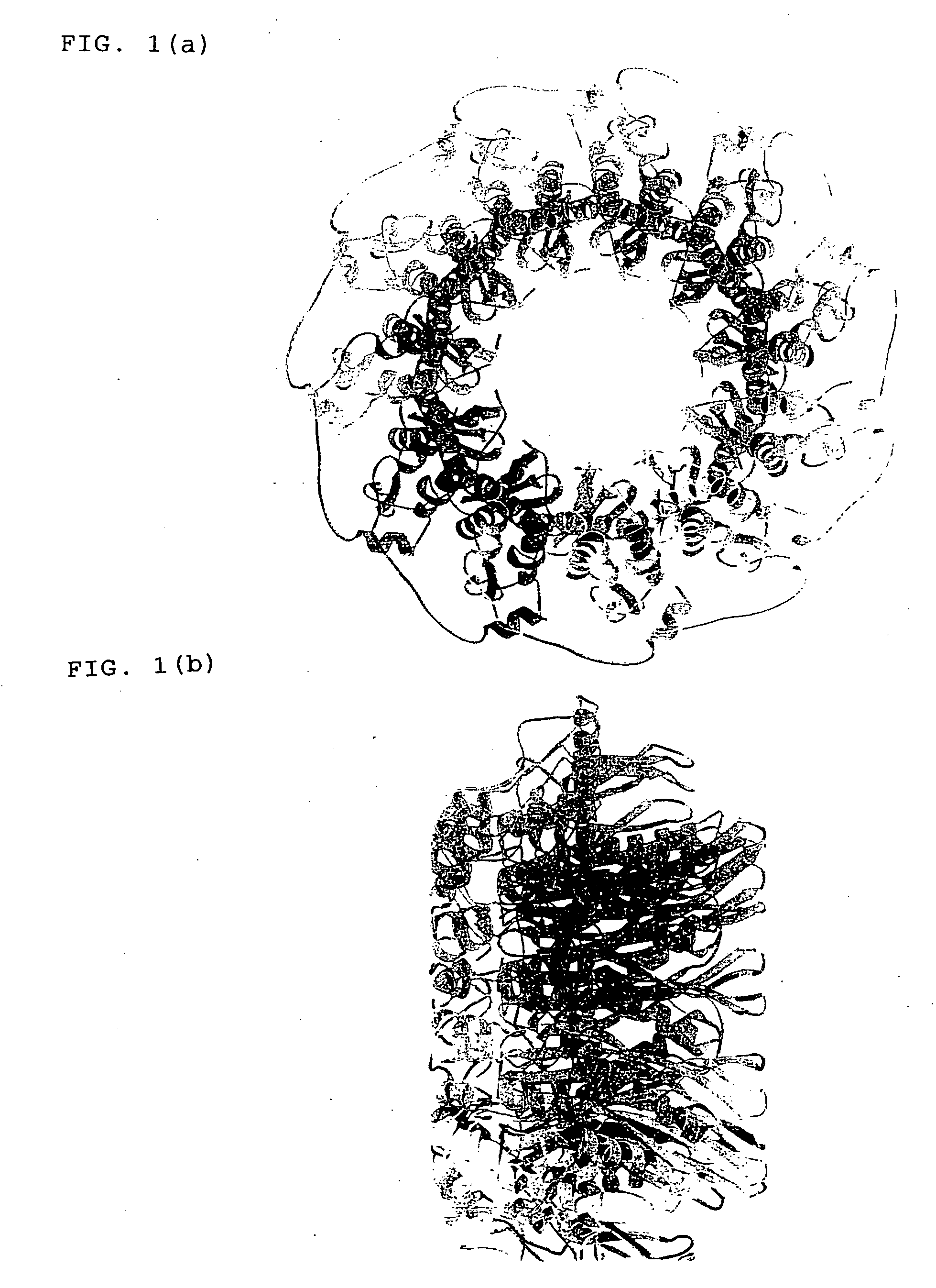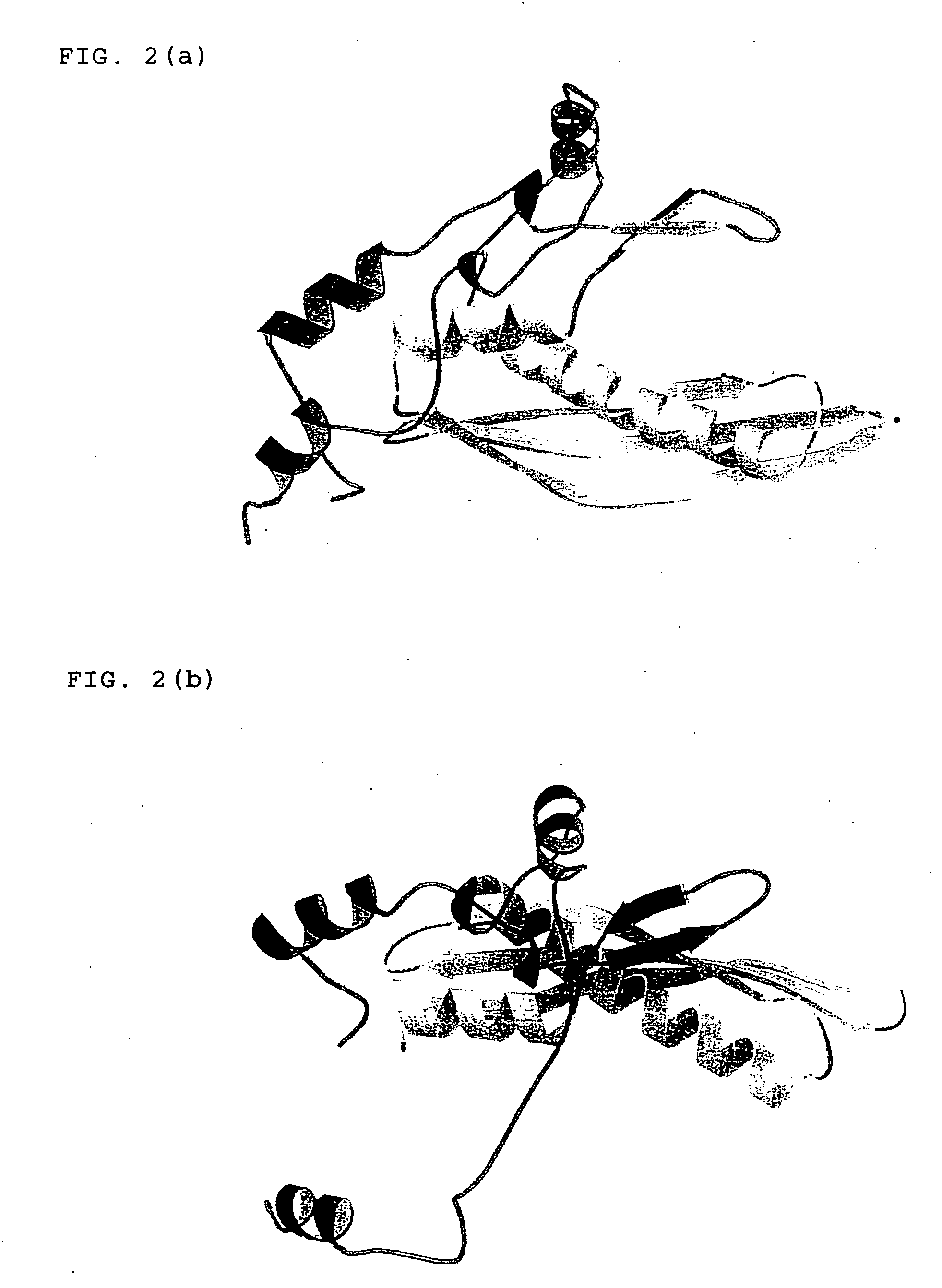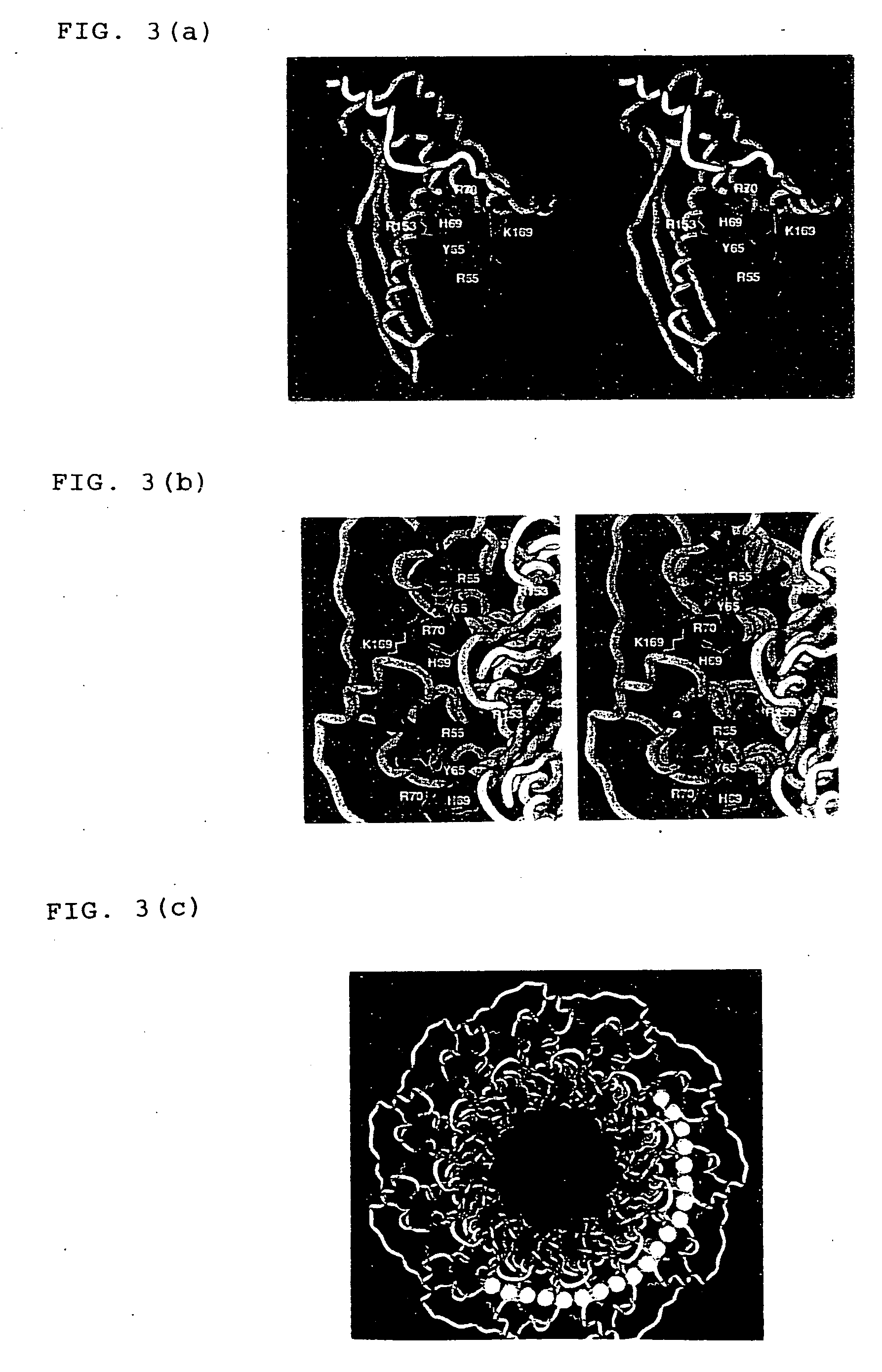Three-dimensional structure of DNA recombination/repair protein and use thereof
a recombination/repair protein, three-dimensional structure technology, applied in the direction of molecular structures, instruments, drug compositions, etc., can solve the problem of insufficient understanding of the precise molecular mechanism, particularly the catalytic mechanism of the enzyme including the dna-binding mode during the homologous pairing step, and the difficulty of directly assaying the homologous recombination activity of the rad52 in eukaryotic cells, etc. problem
- Summary
- Abstract
- Description
- Claims
- Application Information
AI Technical Summary
Benefits of technology
Problems solved by technology
Method used
Image
Examples
example 1
Limited Proteolysis of HsRad52
[0110] 5 μl of HsRad52 protein (1 to 3 mg / ml) prepared by a known method (Kagawa et al., J. Biol. Chem., 2001, 276, 35201-8) was mixed with 5 μl of proteinase K (30 μl / ml) and the mixture was incubated at 25° C. for 4 to 6 hours. The proteinase K solution was diluted in 10 mM Tris-HCl solution, pH 7.5. The reaction mixture was fractionated by 12% SDS polyacrylamide gel electrophoresis (SDS-PAGE), and the resulting protein bands were transferred to a PVDF membrane using a semi-wet blotting apparatus (Bio-Rad). Proteolytic bands were visually detected by staining with a Coomassie Brilliant Blue staining solution, followed by destaining of the membrane with methanol. The protein was eluted from a portion of the PVDF membrane containing the protein bands, to determine the N-terminal amino acid sequence. To measure the molecular weight by mass spectrometry, the reaction mixture containing proteolyzed HsRad52 was treated with 1 μl of 2N HCl to stop further ...
example 2
Analysis of HsRad521-237 by Deletion
[0111] Plural deletion mutants of HsRad521-237 as prepared by deleting sequentially every 5 amino acid residues from the C terminus thereof, namely HsRad521-232, HsRad521-227, HsRad521-222, HsRad521-217, HsRad521-212, HsRad521-207, HsRad521-202, HsRad521-197, HsRad521-192 and HsRad521-187 were subjected to a combination of both of crystallization and biochemical experiments. HsRad521-192 and deletion mutants larger than the HsRad521-192 had absolutely the same DNA binding activity as that of HsRad521-237. Among all of the deletion mutants, the highest amount of crystal was obtained from HsRad521-212 in a system using a screening kit (Crystal Screens 1 and 2 manufactured by Hampton Research Co., Ltd.). Thus, it was determined from these results that HsRad521-212 was the most suitable for structural analysis.
example 3
Purification of HsRad521-212
[0112] HsRad521-212 was purified by three steps of affinity adsorption on Ni-NTA agarose, hexahistidine-tag cleavage and Heparin-Sepharose column chromatography. A DNA encoding HsRad521-212 was cloned in pET15-b (Novagen), an expression vector transcribed by T7 polymerase. The HsRad521-212 protein was expressed at a large scale, using E. coli strain JM109 (DE3) together with tRNAArg3 recognizing the CGG codon and RNAArg4 recognizing the AGA / AGG codon. In case that the expression plasmid did not contain the tRNA genes, the expression level of the HsRad521-212 protein was extremely low. Generally, the HsRad521-212 protein was purified from a culture of one liter. The recombinant E. coli was cultured at 30° C., to which IPTG was added to a final concentration of 1 mM in the logarithmic growth phase (OD600=0.6), to induce the expression of the protein. Subsequently, the bacteria were cultured for 4 to 6 hours to collect the bacterial cells, which were disru...
PUM
| Property | Measurement | Unit |
|---|---|---|
| concentration | aaaaa | aaaaa |
| pH | aaaaa | aaaaa |
| temperature | aaaaa | aaaaa |
Abstract
Description
Claims
Application Information
 Login to View More
Login to View More - R&D
- Intellectual Property
- Life Sciences
- Materials
- Tech Scout
- Unparalleled Data Quality
- Higher Quality Content
- 60% Fewer Hallucinations
Browse by: Latest US Patents, China's latest patents, Technical Efficacy Thesaurus, Application Domain, Technology Topic, Popular Technical Reports.
© 2025 PatSnap. All rights reserved.Legal|Privacy policy|Modern Slavery Act Transparency Statement|Sitemap|About US| Contact US: help@patsnap.com



